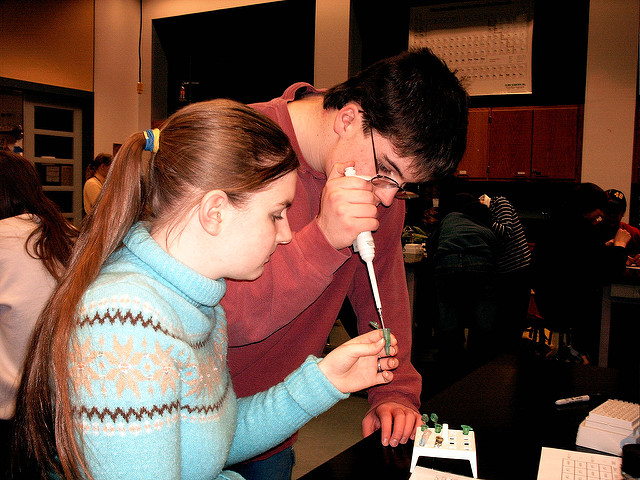DIY Gene Editing: Fast, Cheap—and Worrisome
By Amy Dockser Marcus,
Wall Street Journal
| 02. 26. 2017
The Crispr technique lets amateurs enter a world that has been the exclusive domain of scientists
Kian Sadeghi has postponed homework assignments, sports practice and all the other demands of being a 17-year-old high-school junior for today. On a Saturday afternoon, he is in a lab learning how to use Crispr-Cas9, a gene-editing technique that has electrified scientists around the world—and sparked a widespread debate about its use.
Scientific breakthroughs often raise big ethical questions. Moral concerns around the 1996 cloning of Dolly the sheep or the 2000 announcement of a rough draft of the human genome still reverberate today. The public benefits from scientific advances, particularly in improving health. But some scientists say the power to alter the DNA of plants, animals or people, and the profound impact such changes may have on individuals and society, merits public discussion.
Crispr gene editing by amateurs and hobbyists brings an unusual set of challenges. Crispr-Cas9 is easier, faster and cheaper than previous gene-editing techniques. While that raises the prospect of people with nefarious intent gaining access, the greater concern with amateur enthusiasts...
Related Articles
A Review of Exposed by Becky McClain
“Do not get lost in a sea of despair. Be hopeful, be optimistic. Our struggle is not the struggle of a day, a week, a month, or a year, it is the struggle of a lifetime. Never, ever be afraid to make some noise and get in good trouble, necessary trouble.”
— John Lewis
Becky McClain became famous when she successfully sued Pfizer, one of the very largest pharmaceutical and biotech companies. She...
By staff, Japan Times | 12.04.2025
Japan plans to introduce a ban with penalties on implanting a genome-edited fertilized human egg into the womb of a human or another animal amid concerns over "designer babies."
A government expert panel broadly approved a proposal, including the ban...
By Katherine Long, Ben Foldy, and Lingling Wei, The Wall Street Journal | 12.13.2025
Inside a closed Los Angeles courtroom, something wasn’t right.
Clerks working for family court Judge Amy Pellman were reviewing routine surrogacy petitions when they spotted an unusual pattern: the same name, again and again.
A Chinese billionaire was seeking parental...
By Sarah A. Topol, The New York Times Magazine | 12.14.2025
The women in House 3 rarely had a chance to speak to the women in House 5, but when they did, the things they heard scared them. They didn’t actually know where House 5 was, only that it was huge...




